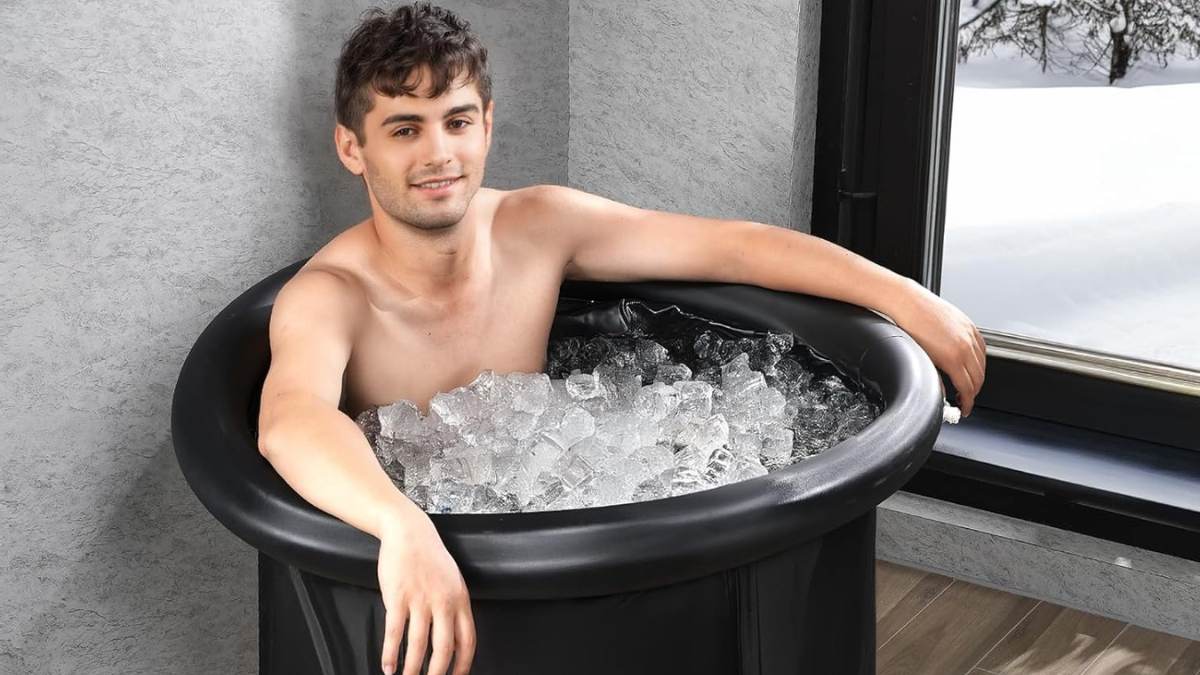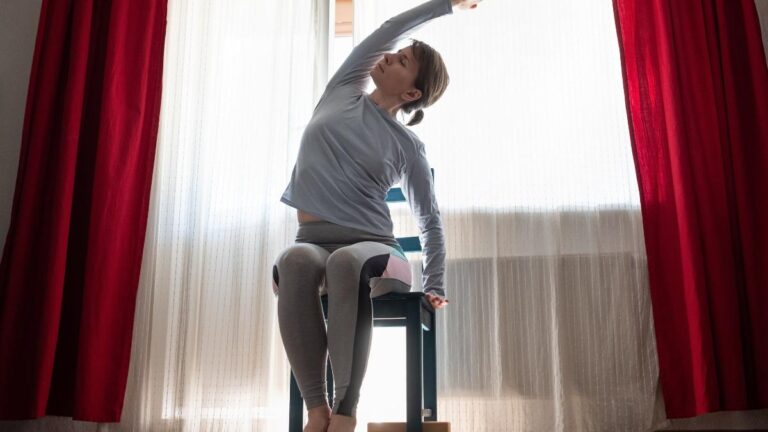How Many Ice Baths A Week? Guide To Recovery And Balance!

Last Updated on September 19, 2025
How often is too often when it comes to ice baths? That’s a question many people quietly wonder as they step into freezing water, hoping for faster recovery or better resilience. The truth is, balance matters more than extremes.
As someone deeply rooted in wellness and recovery, I’ve seen how easily people can push too far with cold exposure.
They’re chasing results but miss the gentle rhythm their bodies truly need. Ice baths, when done right, can support muscle healing, mental clarity, and emotional calm. But the real key lies in knowing how many ice baths a week actually serve you, rather than overwhelm you.
This guide will walk you through safe frequency, benefits, and how to create a mindful weekly routine that leaves you feeling restored, not depleted.
What’s The Right Number Of Ice Baths Per Week?

Finding the sweet spot isn’t about hard rules, it’s about tuning in to both science and personal recovery goals. Most people thrive with two to four sessions per week, depending on lifestyle, fitness level, and stress load. Beginners, though, do best by easing in slowly.
If you’re new, start with one session weekly and notice how your body responds. Do you feel energized the next day, or do you feel drained?
That’s the kind of feedback that guides your routine more reliably than any one-size-fits-all chart. For athletes, three or four sessions can speed up recovery. For those leaning on ice baths for stress relief, two sessions may be plenty.
The goal isn’t to chase more cold exposure, it’s to find a steady rhythm that restores both body and mind.
| How many ice baths a week is ideal? Most people benefit from 2 to 4 ice baths per week for recovery and stress relief. Beginners should start with 1 session weekly and increase gradually. |
Factors That Influence Ice Bath Frequency
So, how often should you really step into the cold? The answer isn’t the same for everyone. Your goals, lifestyle, and health history all shape the best frequency. Let’s break down what matters most before you decide how many sessions fit your week.
Your Recovery Goals
Ask yourself: What do I want out of this? If your goal is muscle recovery after tough workouts, then two to three baths weekly might be right. Athletes often notice reduced soreness when they keep to this rhythm.
But if your aim is emotional calm or stress relief, you may not need as many. Two sessions spaced apart often give the nervous system time to settle.
Clarity comes from linking your intention to your practice. That’s what helps you build a routine that doesn’t just work on paper, it works in your life.
Read Also: Ice Bath Before Or After Workout
Fitness Level and Lifestyle
Your baseline fitness matters more than you might think. Someone training six days a week recovers differently than someone walking daily and working long desk hours.
If you’re already putting heavy stress on your body, cold exposure can help balance that load, but only if you don’t push frequency too hard.
For beginners, less is always safer. Starting with one or two short sessions allows the body to adapt gradually. On the other hand, seasoned athletes often benefit from three to four baths a week, especially during peak training periods.
It’s about matching cold exposure with your actual energy demands.
Health Considerations
Cold immersion isn’t neutral—it impacts circulation, blood pressure, and the nervous system. That’s why underlying health conditions must be factored in. If you have cardiovascular issues, Raynaud’s disease, or other circulation challenges, it’s important to check with your doctor first.
Even healthy individuals can feel side effects if they dive in too often. Lightheadedness, trouble sleeping, or lingering fatigue are all signs to scale back. Wellness works best when it adapts to your body’s feedback, not when it ignores it.
Benefits Of Regular Ice Baths

Once you’ve found the right rhythm, ice baths can do more than cool you down; they can restore balance on multiple levels. These benefits explain why so many people keep coming back to the cold.
Physical Recovery
The most talked-about benefit is reduced inflammation and muscle soreness. Studies show that cold exposure constricts blood vessels and lowers swelling that follows tough workouts. That means you can bounce back faster and feel more capable of training consistently.
Some studies suggest that ice baths may also help limit muscle damage at the cellular level. That translates to less downtime and steadier progress if you’re pushing your body regularly.
The takeaway: it’s not about pain tolerance, it’s about recovery efficiency.
Mental and Emotional Wellbeing
Cold immersion doesn’t just affect muscles, it impacts your mind. The act of sitting calmly in icy water trains the nervous system to handle stress more gracefully. That carries over into daily life, whether it’s a tense meeting or restless night.
Regular sessions have been linked to improved mood, sharper focus, and greater resilience. Many people describe a calm clarity afterward, almost like pressing reset on mental chatter. When combined with breathing techniques, the emotional benefits often deepen.
- Eases physical tension
- Boosts circulation
- Supports deeper sleep
Those aren’t small wins, they’re the building blocks of sustainable wellness.
Risks Of Overdoing Ice Baths
Cold therapy can be powerful, but more isn’t always better. Pushing too far can actually reduce the very benefits you’re seeking. Ice baths demand balance, and overdoing them can create new stress instead of easing old ones.
The first red flag is lingering fatigue. If you feel drained instead of recharged after repeated sessions, it’s a sign your body is overwhelmed. Sleep disturbances also show up when cold exposure becomes too frequent, disrupting the natural rhythm of recovery.
Another risk is blunting muscle growth. Research shows that excessive cold immersion can interfere with strength and hypertrophy by dampening inflammation too much. In small doses, that’s a benefit, but in excess, it slows long-term progress.
What this really means is that ice baths need to remain a supportive tool, not a daily punishment. Your body thrives when stress and rest stay in balance.
How To Create A Weekly Ice Bath Routine
Building a rhythm that works for you takes some trial and reflection. Start small, notice how you feel, then expand gradually. A thoughtful routine respects both your recovery needs and your lifestyle.
Beginner Approach
If you’re new to cold therapy, aim for one to two sessions per week. Keep them short, two to five minutes at a time is often enough. Focus less on “enduring” and more on how your body feels afterward. Does your sleep improve? Do your muscles feel lighter the next day?
Starting this way builds confidence without overwhelming your system. Think of it as gently teaching your nervous system how to adapt. Over time, your tolerance improves, and so does the comfort with adding more sessions.
Intermediate and Advanced Approach
Once you’ve built a baseline, moving up to three or four sessions per week can support heavier training schedules or deeper wellness goals. These can be aligned with workout recovery days or even stressful periods when extra calm is needed.
Longer sessions, five to ten minutes, can be added cautiously, but they’re not essential for benefits. What matters most is consistency. A runner I worked with found three weekly ice baths improved soreness, but when he tried five, sleep issues appeared.
The lesson? Frequency should fit your life, not compete with it. Check out my article on how long should you be in an ice bath to know about the safe duration.
Let’s Improve Your Ice Bath Experience
Cold immersion doesn’t have to feel like pure grit. Done mindfully, it can become a grounding ritual instead of a test of willpower. The way you set up each session shapes not only your comfort but also the benefits you carry into the rest of your day.
One way to enhance the experience is by pairing it with breathing techniques. Slow, intentional breaths calm the nervous system and make the cold feel less shocking. Many people find this shifts the bath from something to endure into something to embrace.
You can also combine ice baths with other wellness practices like sauna, yoga, or meditation. This balance of heat, movement, and stillness creates a rhythm that supports both body and mind.
Over time, these sessions stop being “just cold exposure” and instead feel like part of a steady self-care cycle.
Conclusion – How Many Ice Baths A Week?
So, how many ice baths a week truly help without harm? For most people, two to four sessions strike the right balance. Beginners should always start gently, while seasoned athletes can explore more, but only if their bodies respond well.
What matters most isn’t chasing extremes but finding a rhythm that restores energy, steadies mood, and supports recovery. Ice baths, when practiced mindfully, become less about toughness and more about balance.
Wellness and recovery aren’t built in one plunge, they’re shaped by the choices you repeat with care. Keep the cold as a tool, not a test, and it will serve you well.
Sources
- Setor K. Kunutsor, et al. (2024). The untapped potential of cold water therapy as part of a lifestyle intervention for promoting healthy aging
https://link.springer.com/article/10.1007/s11357-024-01295-w
- Jonathan M. Peake, et al. (2020). The Effects of Cold Water Immersion and Active Recovery on Molecular Factors That Regulate Growth and Remodeling of Skeletal Muscle After Resistance Exercise
https://www.frontiersin.org/journals/physiology/articles/10.3389/fphys.2020.00737/full






